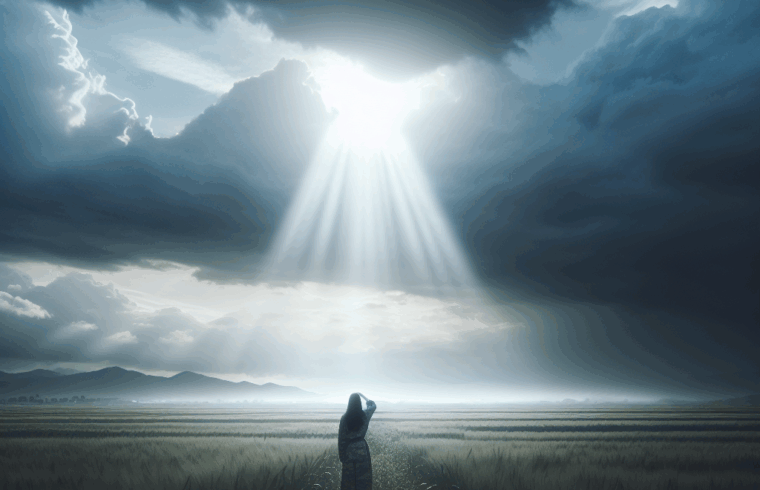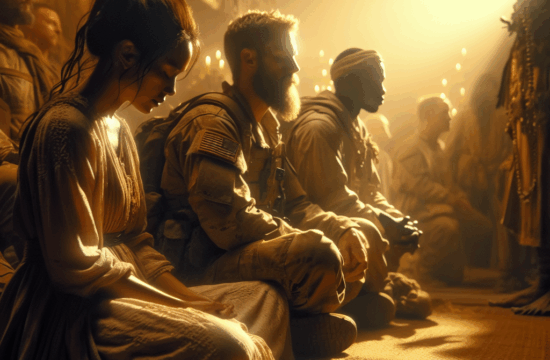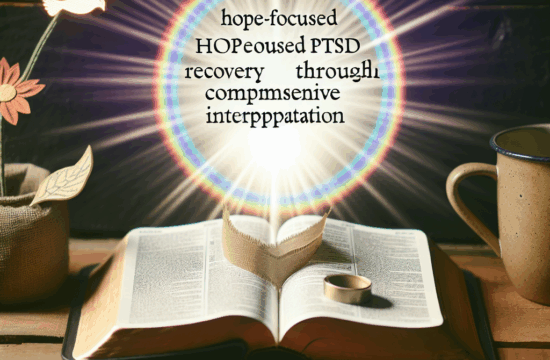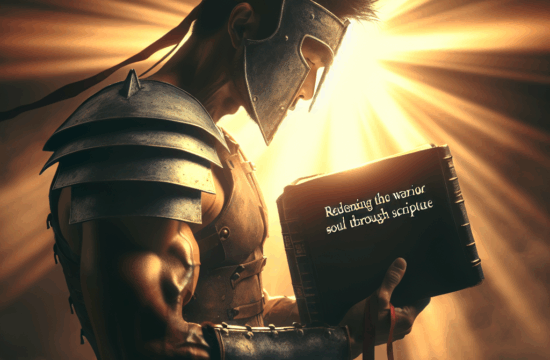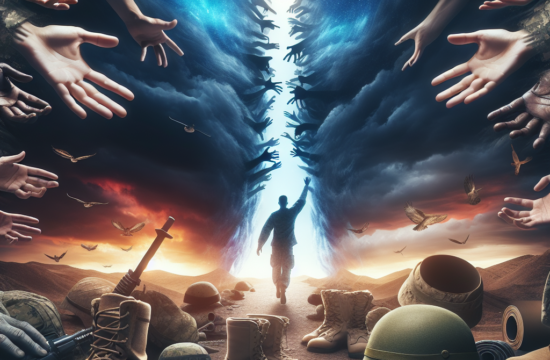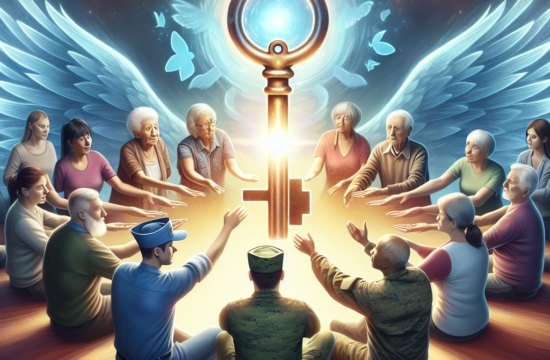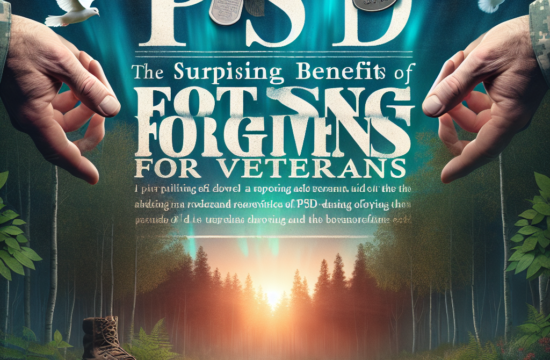==> Thank you for reading this post! Click Here If you are looking for support and Victory over PTSD.
Hi there! Today, I want to share something really close to my heart – the journey of finding God’s peace in the thick of PTSD (Post-Traumatic Stress Disorder). It’s a path I’ve walked, and I’ve learned a thing or two that I hope can help you too. Let’s break this down into five key areas that guide us toward a sense of tranquility and reassurance despite the storm of past experiences.
Understanding PTSD and Its Impact
What is PTSD?
To truly grasp how to find peace, it’s vital to understand PTSD. It’s not just a buzzword; it’s a real condition that can shake your foundation to the core. It’s a reaction to trauma that can manifest in flashbacks, anxiety, uncontrollable thoughts, and so much more. When you’ve been through something traumatic, it’s like your mind and body keep reliving that moment, making it tough to find calm.
I remember my first encounter with PTSD – it was bewildering and isolating. I felt as though I was stuck in a time loop, haunted by memories that surged back unexpectedly. Understanding this response is crucial – it’s not just ‘in your head’; it’s a real psychological and physiological reaction. Accepting this helps lay the groundwork for healing.
Once I knew what was happening, I started to look for ways to cope. Knowing that many others were experiencing similar feelings was a comfort. For me, it wasn’t just about recovery; it was about regaining my sense of self. Understanding PTSD opened up pathways to healing that I hadn’t considered before.
The Nature of Trauma
Let’s dive into the nitty-gritty of trauma. We need to recognize that trauma isn’t a one-size-fits-all kind of deal. Each person’s experience is unique, shaped by their background, resilience, and environment. I realized that the kind of trauma I faced might look different from someone else’s, but the emotional responses often share similarities.
In my journey, I learned that acknowledging my trauma was the first step toward healing. Suppressing those emotions only compounded my struggles. I began to embrace my story, understanding that it was part of who I am but not all of it. This was liberating! It’s okay to say, “This happened to me, and it hurt, but I’m moving forward.”
Talking openly about trauma with trusted friends, therapists, or support groups made a world of difference. It created an environment where I felt safe sharing my feelings and experiences. Remember, your trauma doesn’t define you, but how you choose to respond can shape your future for the better.
The Connection Between Body and Mind
One thing that’s become super clear to me is the deep connection between our minds and bodies. When you’re dealing with PTSD, it’s common to feel overwhelming physical symptoms alongside emotional turmoil. For me, stress manifested physically as tension and fatigue, leaving me worn out and struggling to cope.
This connection underscores the importance of self-care. I started incorporating practices that honored this mind-body link – yoga, mindful breathing, and even simple stretching routines helped me feel more grounded. Movement becomes a form of therapy, allowing emotions to be released safely and constructively.
Recognizing the signs my body was sending me helped me take proactive steps. It was about tuning in rather than pushing through. Creating habits that honor both my mental and physical wellbeing is a journey, but each step brings me closer to that peace we all seek.
Finding Spiritual Sanctuary
The Role of Faith in Healing
I’ve always found comfort in spirituality, and it played a huge role in my recovery process. When grappling with PTSD, turning to faith was like coming home. It provided me with a sense of belonging and support that was sorely needed during tough times. I often leaned into prayer and meditation, finding that quiet moments connected me with something larger than life.
Faith can serve as an anchor during turbulent times. I learned to lean on scripture and spiritual literature that spoke directly to my soul. These messages of hope and healing became guiding lights, steering me away from the darkness of despair. Sometimes, the simplest verses would resonate deeply, reminding me I wasn’t alone.
Community is another big part of this journey. Being part of a faith community surrounded by compassionate individuals helped me understand that sharing struggles can be a pivotal part of healing. They uplifted me, prayed for me, and often lifted my spirits just by being present. If you find yourself on a similar path, seek out a community that can support your journey.
Building a Personal Connection with God
Part of finding God’s peace involves fostering a personal relationship with the divine. It’s a journey in itself. I spent time exploring different forms of prayer, journaling, and even nature walks where I’d soak in the beauty around me. Each interaction felt like a dialogue; I started to recognize the subtle nudges and signs that helped guide my steps away from the turmoil.
This personalized connection reminded me that it’s perfectly okay to express doubts and fears. I learned that vulnerability in prayer is not a weakness but rather an authentic way to communicate with God. Over time, I found that pouring out my heart brought an immeasurable sense of relief – it’s freeing! Being honest in my conversations allowed me to feel a deeper sense of understanding and acceptance.
Through this process, my faith grew. It’s not just a religion; it became a relationship filled with trust and assurance. I learned that God’s peace isn’t about the absence of struggle but the presence of reassurance and hope amidst challenges. It’s like having a quiet sanctuary in your heart, no matter what chaos surrounds you.
Practicing Gratitude
Gratitude became a massive game-changer for me as I navigated through PTSD. It’s easy to focus on what’s gone wrong, but shifting my perspective to acknowledge the good in life opened up new pathways to positivity. Each day, I’d jot down three things I was grateful for, no matter how small. This simple action reprogrammed my mind.
When I started recognizing the beauty in the little things – a warm cup of coffee, a smile from a stranger, or even a good book – they began to accumulate. I felt the weight of negativity ease up, making space for joy. Suddenly, the world didn’t seem so dark after all. Practicing gratitude became a daily ritual, keeping my spirits high.
I also found expressing gratitude towards others helped foster deeper relationships. Thanking those who supported me during my struggles built connections that I’ll cherish forever. Gratitude isn’t just a feeling; it’s an active practice that can transform your outlook. It’s about celebrating life’s moments, big and small, and cultivating joy in the most unexpected places.
Finding Support and Community
Therapeutic Support
No one can walk this journey alone, and seeking therapeutic support was one of the best decisions I made. From talk therapy to trauma-informed care, I explored various options until I found what resonated with me. It’s all about finding someone who can resonate with your experience and guide you on this pathway to recovery.
I remember the first therapy session; it felt like opening a floodgate! Having a space where I could articulate my feelings, fears, and experiences was liberating. It’s crucial to find a therapist who specializes in PTSD. They can provide tools that empower you to manage symptoms effectively and encourage healing through professional guidance.
Get Support and Help with Recovery! Visit us for more Information and Support
Beyond individual therapy, I’ve found group therapy sessions particularly enlightening. Hearing others’ stories and recognizing I wasn’t alone offered immense comfort. It created a sense of belonging, knowing others were also clawing their way through similar situations. Those shared moments built a bridge of understanding, quelling feelings of isolation.
Building a Support System
Your recovery journey is also about surrounding yourself with the right people. Building a supportive network made all the difference in my recovery. Friends, family, and loved ones who understood and were empathetic played a huge role in my healing. They were my advocates, reminding me to take care of myself when things got tough.
One lesson I learned was the importance of communicating my needs. It was delicate; being vulnerable with people I cared about was sometimes scary, but it led to deeper connections. By expressing what I was going through, I encouraged my loved ones to support me better. Remember, sharing your story can empower you and help others in understanding what you’re experiencing.
Finding a support group in my area was a pivotal moment for me. Just being in a room with others who truly understood PTSD transformed my healing journey. It’s a powerful experience to listen, learn, and share. It’s about creating a community of understanding and compassion.
Utilizing Online Resources
In this digital age, online support is invaluable. There are forums, blogs, and social media groups dedicated to PTSD that became lifelines for me. Connecting with people worldwide allowed me to share experiences, advice, and even celebrate progress together. It reminded me that distance didn’t diminish the power of support.
I found an array of online resources that offered coping techniques, mindfulness exercises, and shared stories of resilience. Each click led to new insights and strategies I could integrate into my daily life. Social media can sometimes get a bad rap, but it can also serve as a powerful platform for connection and shared healing.
Remember, though, to be cautious navigating online spaces. Seek out reputable sources and stick with communities that foster positivity and encouragement. While the internet is a vast landscape, it’s essential to find the right fit for your needs.
Moving Forward with Hope
Setting Achievable Goals
When living with PTSD, it’s easy to feel immobilized by fear and uncertainty. One of the most valuable strategies I adopted was setting small, achievable goals. It was about celebrating each step, no matter how tiny, toward reclaiming my life. This focus brought a sense of purpose back into my days.
For instance, I started with something simple like taking a walk each day or journaling my thoughts. Each little accomplishment fueled my motivation to keep moving forward. By breaking down larger aspirations into manageable tasks, I empowered myself. The journey isn’t about perfection; it’s about progress!
These goals serve as reminders that healing takes time. Each time I accomplished a small goal, I was reminded of my resilience and strength. This instilled a sense of hope that I could face the future rather than be held hostage by my past. It’s about taking back control, one step at a time.
Embracing Continuous Learning
Life is a constant teacher, and I quickly learned that embracing continuous learning could be a powerful antidote to feeling stuck. Whether it’s digging into self-help books, engaging in workshops, or simply exploring mindfulness practices, each new piece of knowledge brings fresh insights into managing PTSD.
I sought out resources in the form of books about resilience and emotional well-being. With each page, I discovered new strategies that resonated with my journey. This thirst for knowledge helped me feel more in control of my healing process. It’s empowering to realize that I can shape my narrative and how I respond to challenges.
Lifelong learning also comes with accepting that setbacks might occur and that’s perfectly okay. The road to recovery isn’t linear, and approaching each experience with a growth mindset fosters resilience. Allowing for mistakes and learning from them creates a more compassionate space for healing.
Maintaining a Positive Mindset
Lastly, cultivating a positive mindset can be transformative. It feels impossible to do when your mind is flooded with negativity, but each day offers a new opportunity to practice. I learned to challenge negative thoughts and replace them with affirmations and uplifting narratives about myself.
Acknowledging progress and having faith in the journey fosters hope. I often find motivation in quotes or positive affirmations I pin up around my house. Each time I face a rough day, these reminders draw me back to a state of optimism – it’s like a tiny compass guiding me forward.
It’s important to remain patient with yourself. Negative thoughts may creep in, but recognizing them for what they are – just thoughts – can be liberating. Remember, you are not defined by your struggles, but by how you choose to respond. A positive mindset doesn’t erase hardships but can overshadow the darkness, offering a glimmer of hope for the future.
FAQs
1. What is PTSD, and how can it affect someone?
PTSD, or Post-Traumatic Stress Disorder, arises after experiencing or witnessing a traumatic event. It can cause symptoms such as flashbacks, anxiety, nightmares, and emotional numbing. Each person’s experience is unique, influencing them differently based on their resilience and support systems.
2. How can spirituality help in the healing process?
Spirituality can provide a sense of connection, belonging, and peace. Engaging in prayer, meditation, or exploring faith can serve as tools that foster hope and support healing. Finding comfort in a higher power can remind individuals they’re not alone in their struggles.
3. Why is building a support system important?
A support system is vital because it creates a network of understanding and compassion. Sharing your journey with others who can relate fosters community and alleviates feelings of isolation. Friends, family, and support groups can provide encouragement and understanding during tough times.
4. What role does gratitude play in coping with PTSD?
Practicing gratitude helps shift focus from negative experiences to the positive aspects of life. By acknowledging small victories and moments of joy, individuals can create a more balanced outlook. This exercise can cultivate hope and resilience, aiding in recovery.
5. How can I start my journey toward healing?
Begin by seeking understanding about your experiences and how they affect you. Set small, achievable goals, seek support from others, and consider exploring therapeutic options. Embrace the journey with patience, knowing that healing is not a linear process, but rather a gradual path of growth and self-discovery.

